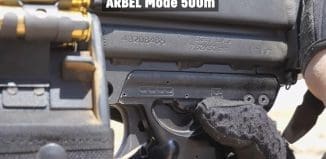Personal UAS for IDF infantry soldiers
This post is also available in:  עברית (Hebrew)
עברית (Hebrew)

This is the next big step in small, very small, Unmanned Aerial Systems (UAS). Israel’s Defense Forces (IDF) is preparing an RFI for a “personal UAS” for the infantry soldier.
The operational requirement for such a UAS stems from the fact that in the framework of the IDF’s “Digital Army” program, the infantry soldier is already equipped with navigation and communication systems that make him an integral part of a wide array of systems that create the “big picture” but at the same time allows the lone soldier to affect the battle field.
According to FlightGlobal, the RFI will focus on a 1-1.5 kg UAS with an endurance of 15 minutes with a day or night payload. The target is to enable a low unit price mainly by mass production.
The IDF’s artillery corps is currently using Elbit System’s SkyLark-1LE UAS, which is operated by at least two soldiers. This system, which has a 3-hour endurance, a 40-km range and a max altitude of 15,000 feet, can carry various electro-optical payloads.
Register to iHLS Israel Homeland Security
Rafael has recently unveiled a prototype of a small tactical intelligence gathering hovering system, called “Maoz”. The system is carried in a small canister stowed in the personal gear of an infantry soldier. After mission completion it can be returned to the canister for further use.
According to Rafael, a soldier can carry a number of these hovering systems in his personal gear, together with a small control unit.
The operation is very easy and according to the Israeli company, the “Maoz” can hover for 15 minutes and can be operated after battery replacement for 50 hours without maintenance.
The micro system can hover up to a distance of 1 km from its operator in an urban area and 5 km in an open one. Hovering altitude is 100 meters in an open area and 50 in an urban one.
Rafael plans to equip the micro system with a day CCD (Charge Coupled Device) camera and with a special night vision sensor.
The expected RFI is considered a breakthrough in the use of UAS in the IDF, as for the first time the intention is to allow almost each fighting soldier to look “beyond the hill” and get the data on a small device for his immediate use.




























